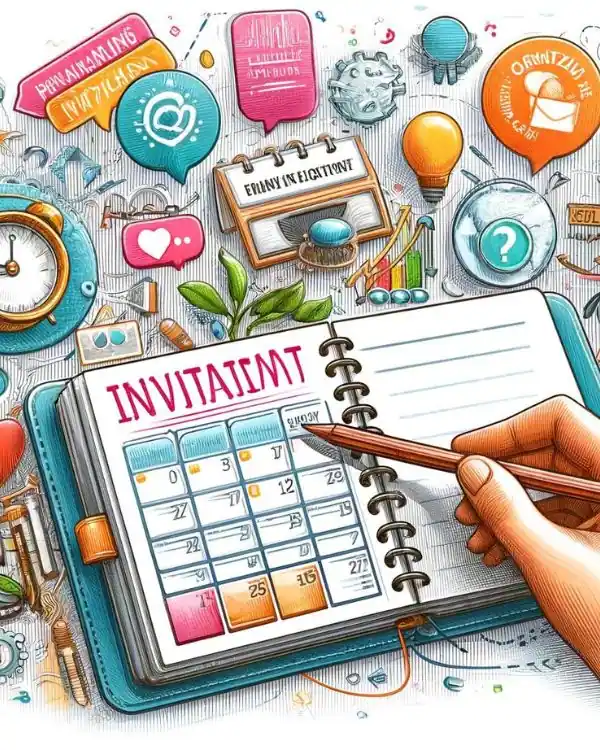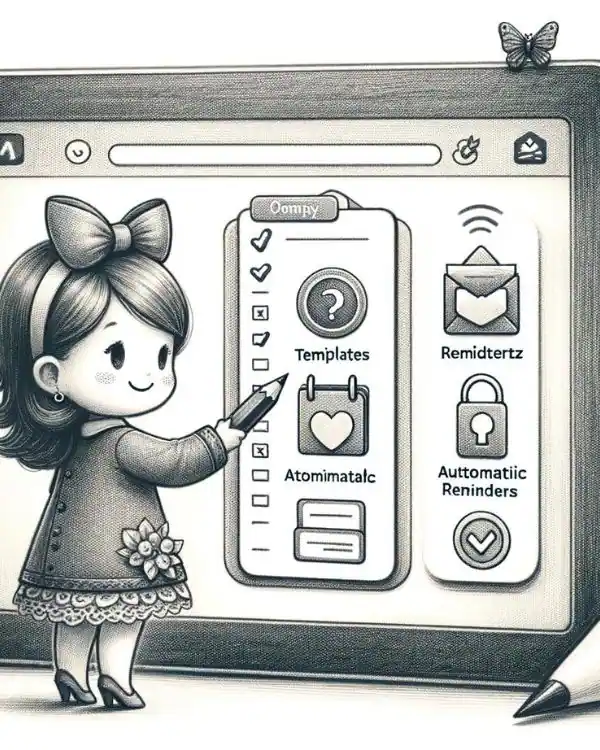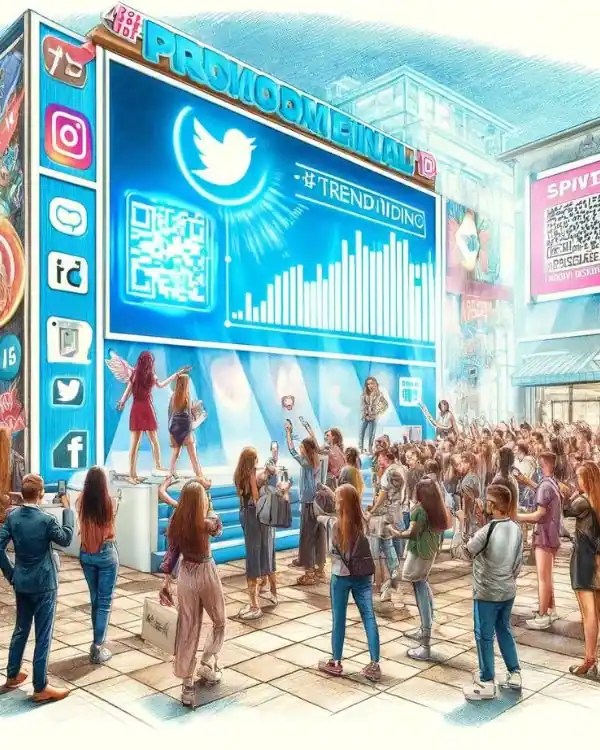Advertisement
By IS Team
Top Invitation Strategies To Maximise Turnout At Large-Scale Events

Advertisement
Navigating the vibrant landscape of large-scale corporate events requires savvy invitation strategies that captivate and resonate. Dive into the art of crafting invites that are more than just notices—they're the first step in an engaging journey. By tapping into the nuances of your audience's preferences, blending your brand's signature style, and harnessing the latest digital tools, you create an invitation that sparkles with potential. Add a dash of personalization and timely reminders, and you're not just inviting guests—you're drawing them into an unforgettable experience. Let each invite be a gateway to excitement, setting the stage for an event that promises to dazzle and deliver. 🌟
Understanding Your Audience

Advertisement
Knowing your audience is crucial for crafting invitations that resonate. Dive into the demographics, interests, and values of your event attendees to tailor an experience that meets their expectations. Are they seeking networking, educational opportunities, or entertainment? This insight will guide your invitation design.
Utilize data-driven insights to segment your audience and customize your messaging. For example, highlight eco-friendly initiatives if sustainability matters to them, or focus on tech innovations for tech-savvy guests.
A well-crafted invitation not only communicates event details but also connects on a personal level, increasing the likelihood of attendance. Align your invitations with your audience's preferences to enhance their experience and improve your event’s success. 🎯
Advertisement
Designing Your Invitation

An invitation is more than just a call to attend; it's a reflection of your event's brand and theme. To ensure your invitation stands out and communicates effectively, focus on these key elements:
- Brand Incorporation: Seamlessly integrate your company's branding into the invitation design. This fosters immediate recognition and creates a consistent experience for attendees.
- Event Themes: Use artistic elements to capture the essence of your event’s theme. Whether it's elegant, modern, or thematic, ensure the design reflects the overall vibe of the event.
- Visual Appeal: Employ eye-catching graphics and legible fonts. The visual design should grab attention while making the information easy to read.
Leverage creative digital tools to craft invitations that not only provide essential details but also spark curiosity and excitement. These tools can help you blend colors, fonts, and imagery in a way that makes each invitation both unique and engaging. 🎨
Crafting Compelling Content
When it comes to invitations, clarity reigns supreme. A clear, concise message that effectively communicates the event's purpose, date, time, venue, and details about special guests is crucial. Here are some essential tips to ensure your invitation's wording is compelling:
Use Active Voice and Engaging Language: Active voice helps create a sense of urgency and importance, making the invitation more direct and dynamic. Engaging language captures the reader’s interest and keeps them engaged.
Highlight the Benefits of Attending: Clearly articulate what attendees will gain by participating in the event. Whether it’s networking opportunities, exclusive insights, or unique experiences, make these benefits prominent to enhance appeal.
Emphasize Key Details: While being concise, ensure that all critical information is easy to find and understand. Use bullet points or bold text to make important details stand out.
Remember, the right choice of words can transform uncertainty into action. Your invitation is not just a notification; it's an appeal to engage, participate, and benefit. Make every word count to turn a maybe into a definite yes. ✉️
Timing and Scheduling

The timing of your invitations is as critical as the content within them. Strategically sending out invitations at the right moment can significantly enhance the likelihood of high attendance. Here are key strategies for optimal timing and effective scheduling:
- Identify the Optimal Time to Send Invitations: Generally, sending invitations 4 to 6 weeks before the event allows your guests enough time to schedule and plan. For more formal or significant events, consider extending this lead time.
- Utilize Digital Platforms for Scheduling: Leverage the capabilities of digital platforms to schedule your invitations and follow-up communications. These tools can automate the process, ensuring that reminders are sent at just the right intervals.
- Follow-Up Reminders: Gentle reminders are crucial for keeping your event at the forefront of invitees’ minds. Schedule a reminder two weeks before the event and a final reminder a few days prior. Ensure these messages are friendly and persuasive, not just repetitive.
Efficient use of digital tools not only simplifies the process but also ensures that your invitations and reminders are timed perfectly to maximize response rates. Setting these systems up in advance can save you time and increase the effectiveness of your event marketing efforts. ⏰
Utilizing Technology

Advertisement
In today's digital age, leveraging advanced technology can transform the way you handle event invitations, making the process seamless and more efficient. Here’s how you can utilize cutting-edge digital tools to enhance your invitation strategy:
- Advanced Invitation Tools: Use state-of-the-art digital invitation platforms that offer a range of features like customizable templates, guest list management, and automatic reminders. These tools help you create professional-looking invitations that capture the essence of your event.
- Exclusive Benefits of Our Platform: Our platform specifically provides unique features that simplify your invitation process. Enjoy benefits such as real-time RSVP tracking, easy integration with social media for broader event promotion, and analytics to gauge the effectiveness of your invitations.
- Streamlined Management: By integrating these technologies, you can automate much of the logistical work involved in event planning. From sending out bulk invitations effortlessly to managing responses, the right technology can save you time and reduce stress.
Embrace these technological solutions to minimize the complexities of event planning and focus more on creating an unforgettable experience for your attendees. Let technology take the wheel and watch your event planning process accelerate to new heights. 🚀
Personalization Techniques

Tailoring your invitations to match the specific interests and preferences of each invitee can transform the standard invitation into a personal call to action. Here's how to effectively use personalization techniques in your digital invitations:
- Leverage Data for Customization: Utilize the data you have on your guests to personalize every aspect of your invitation. This could include addressing them by name, referencing their company or role, or even customizing the invitation based on past event attendance.
- Tailored Content: Develop invitation content that speaks directly to the interests of the recipient. For example, if your data shows a group of attendees are particularly interested in sustainability, highlight the eco-friendly features of your event in their invitations.
- Visual and Textual Personalization: Customize the look and feel of your invitations to resonate with your audience. Use colors, fonts, and imagery that align with the aesthetics or professional interests of your guests.
- Dynamic Content: Implement dynamic content that changes based on the recipient’s preferences or previous interactions with your brand. This can include personalized greetings, bespoke event schedules, or exclusive offers.
The personal touch in digital invitations is not just about aesthetics; it's about creating a connection that encourages attendance and participation. 💡
RSVP Management

A robust and efficient RSVP management system is crucial for the smooth execution of any event. It not only helps in tracking attendee numbers but also provides valuable insights for both current and future event planning. Here’s how to optimize your RSVP management for better efficiency and effectiveness:
- Digital RSVP System: Implement a digital RSVP system that automates the process of collecting responses. This system should be user-friendly, easily accessible online, and capable of handling multiple response types (e.g., attending, not attending, maybe).
- Manage Responses Effectively: Use the system to keep a real-time tally of who will be attending, who won’t, and who hasn’t responded yet. This real-time data allows you to adjust logistics accordingly, such as venue size, catering needs, and seating arrangements.
- Data Analysis: Analyze the data collected through your RSVP system to gain insights into attendee behavior and preferences. This analysis can help you understand what factors influenced attendance rates and guest satisfaction, providing valuable lessons for planning future events.
- Communication Features: Ensure your RSVP system includes options for sending automatic confirmations, reminders, and updates about the event. This keeps your attendees informed and engaged, reducing the likelihood of no-shows and last-minute cancellations.
- Feedback Collection: Incorporate a feature for collecting feedback post-event directly through the RSVP system. This can provide immediate insights into what attendees thought about the event, what they enjoyed most, and areas for improvement.
An effective RSVP management system is not just about counting heads; it's a comprehensive tool that enhances the attendee experience, simplifies event logistics, and provides strategic data to refine your event planning processes. 📊
Integrating Social Media and Marketing

Advertisement
Social media is a powerful tool to amplify your event's reach and engage a broader audience. By integrating effective social media strategies, you can turn your event into a vibrant online community, encouraging interaction and participation before, during, and after the event. Here's how to effectively harness the power of social media for your event:
Create a Unique Event Hashtag: Develop a catchy and unique hashtag for your event. This not only helps in tracking all event-related posts but also encourages attendees to use it when posting about the event, creating a stream of user-generated content and discussions.
Encourage Sharing: Motivate attendees to share their registration or attendance on social media by offering incentives, such as discounts, giveaways, or exclusive access at the event. This peer-to-peer recommendation can significantly increase your event's visibility.
Leverage Multiple Platforms: Utilize various social media platforms (Facebook, Instagram, Twitter, LinkedIn) to promote your event. Tailor your message to suit the platform and its audience. For instance, use LinkedIn for professional networking events and Instagram for visually-driven content.
Interactive Content: Post interactive content such as polls, quizzes, and behind-the-scenes looks at event preparations to keep potential attendees engaged and excited about the event. This kind of content can stimulate interest and anticipation leading up to the event.
Live Updates: Use social media to provide live updates during the event. Live tweeting, streaming panels, or sharing photos and videos in real-time can make people feel included even if they aren’t physically there.
Post-Event Engagement: Continue to engage with your audience even after the event is over. Share highlights, thank attendees for coming, and tease future events to maintain interest and build a community for subsequent events.
Integrating social media effectively not only boosts your event’s visibility but also enhances attendee engagement, creating a more dynamic and interactive experience for everyone involved. 📢
Feedback and Follow-Up
Gathering feedback after your event is essential to understanding its impact and areas for improvement. Utilizing digital channels to collect this feedback can streamline the process and provide actionable insights for future events. Here’s how to effectively implement feedback and follow-up strategies:
- Digital Feedback Forms: Send out digital feedback forms to all attendees shortly after the event concludes. Make these forms accessible and easy to complete on mobile devices. Ask concise but comprehensive questions that cover various aspects of the event, including venue, content, speakers, and overall experience.
- Email Follow-Ups: Use email campaigns not only to thank attendees for their participation but also to encourage them to provide feedback. Personalize these emails to show appreciation for their specific contributions and attendance.
- Social Media Engagement: Leverage social media platforms to engage with attendees post-event. Encourage them to share their experiences and feedback publicly, which not only provides you with additional insights but also helps to keep the conversation about your event alive.
- Incentivize Feedback: Offer incentives for completing feedback forms, such as a chance to win a prize, discounts on future events, or exclusive access to post-event content. This can significantly increase the response rate and quality of feedback received.
- Analyze and Act: Collect and analyze the feedback data to identify strong points and areas needing improvement. Share these findings with your team and use them as a basis for planning future events. This ongoing loop of feedback and action helps in continuously refining your event strategies and enhancing attendee satisfaction.
- Continuous Communication: Keep the lines of communication open with attendees even after the event is over. Inform them about how their feedback is being used to improve future events, and keep them updated on upcoming opportunities to engage further with your brand.
Implementing a thorough feedback and follow-up process not only demonstrates your commitment to excellence but also builds a loyal attendee base that feels valued and heard. Your next event can indeed always be better than the last. 🔄
By adopting these strategies, you're not just inviting guests; you're crafting an experience that begins the moment they open their invitation. Get ready to transform your corporate event invitations into gateways of unparalleled experiences and memories! 🎉
Frequently Asked Questions
What is the best way to handle invitation declines for large events?
Handle declines gracefully by thanking invitees for their response and expressing hope to engage with them at future events. Consider asking for feedback on their decision to decline, which can provide valuable insights.How can I ensure my invitation stands out in a crowded inbox?
Use a compelling subject line and include an eye-catching preview or snippet. Personalization, such as using the recipient’s name, can also increase the likelihood of your invitation being noticed and opened.Is there a recommended platform for managing large-scale event invitations?
Choose platforms that offer robust features like guest segmentation, custom branding options, and detailed analytics. Platforms like Eventbrite or Cvent are popular for their comprehensive event management tools.How should I follow up with guests who have not responded to the invitation?
Send a polite reminder a week after the initial invitation and another closer to the RSVP deadline. Ensure the tone is friendly and the message reiterates the value and excitement of the event.
Advertisement
I'm Looking For!








